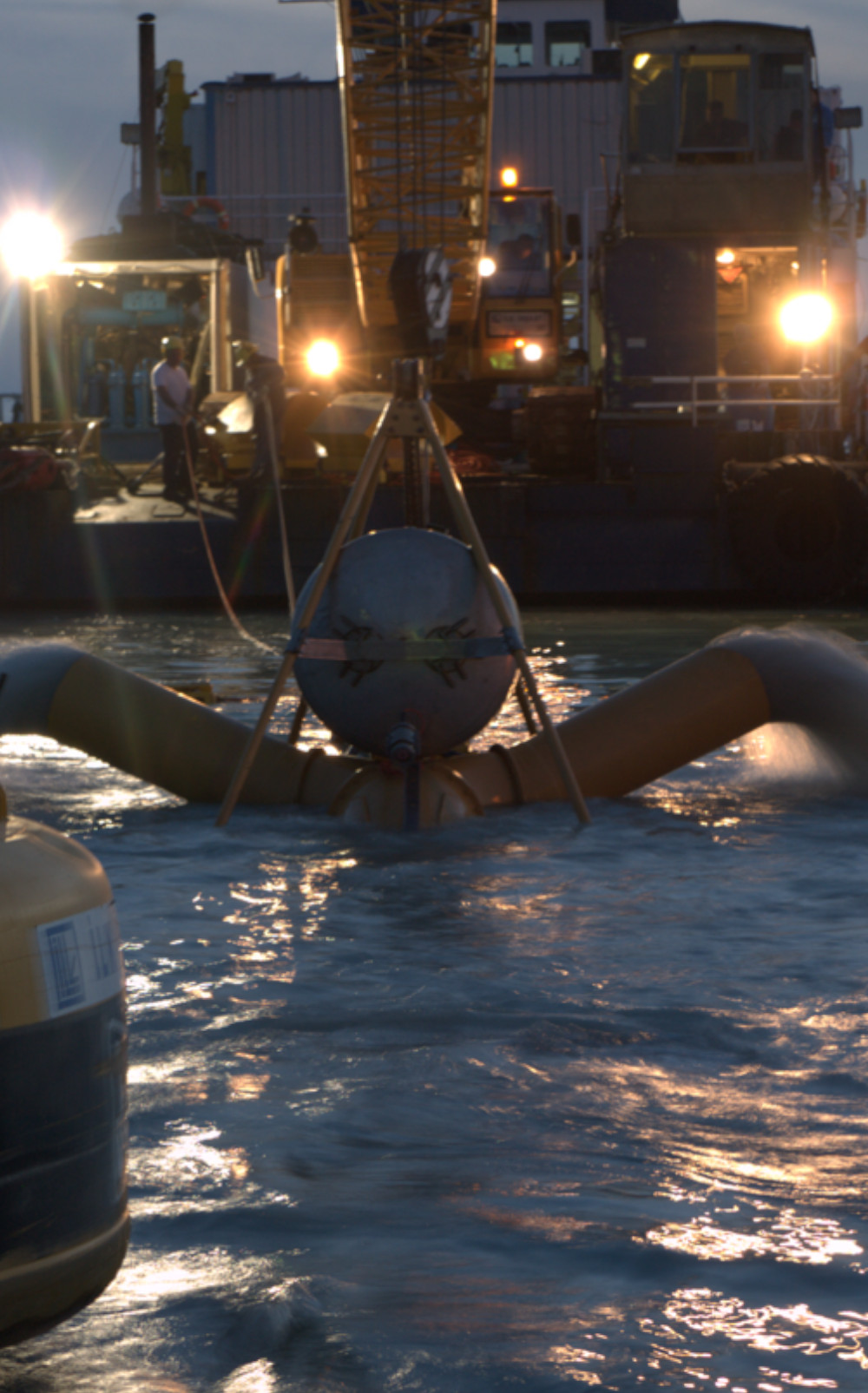
Post-trenching
in Shore
Approach
SEA’s Post-Trenching Machines
can also be used in shore
approach areas, in very hard soil
(silty rock, coral, calcarenite and
cemented sand), without having
to resort to the support of a
cofferdam.
The use of the post-trenching method in shore approach areas is the optimal solution for the burial of underwater pipelines as it offers the following advantages:
TECHNICAL BENEFITS:
Thanks to its working method, SEA’s machines operate only along the route, creating a limited linear trench, without the danger of creating free-span. ENVIRONMENTAL BENEFITS:
Thanks to the technical characteristics of SEA's machines, post-trenching causes less environmental impact than the construction of a cofferdam, greatly reducing the trench width by limiting it to the diameter of the pipeline. This will also facilitate the natural back-filling phase of the trench itself with the use of the excavated material, without the need for outsourcing.
FINANCIAL BENEFITS:
Post-trenching proves itself as faster and less invasive than building a cofferdam, thus reducing project times and costs. Furthermore, being independent from the laying operations, it allows a reduction in project risks and can be carried out at later more favorable times, without causing the trench to fill itself
after the installation of the product.
The use of the post-trenching method in shore approach areas is the optimal solution for the burial of underwater pipelines as it offers the following advantages:
TECHNICAL BENEFITS:
Thanks to its working method, SEA’s machines operate only along the route, creating a limited linear trench, without the danger of creating free-span. ENVIRONMENTAL BENEFITS:
Thanks to the technical characteristics of SEA's machines, post-trenching causes less environmental impact than the construction of a cofferdam, greatly reducing the trench width by limiting it to the diameter of the pipeline. This will also facilitate the natural back-filling phase of the trench itself with the use of the excavated material, without the need for outsourcing.
FINANCIAL BENEFITS:
Post-trenching proves itself as faster and less invasive than building a cofferdam, thus reducing project times and costs. Furthermore, being independent from the laying operations, it allows a reduction in project risks and can be carried out at later more favorable times, without causing the trench to fill itself
after the installation of the product.